12 Magento SEO Tips To Increase Organic Traffic For Your Magento Website
While Magento is one of the most popular eCommerce platforms on the web with nearly 200,000 live stores, it has its drawbacks, especially when it comes to SEO and organic search engine visibility. If you’re sure to avoid the common Magento SEO issues and follow our Magento-specific SEO tips below, you’ll be one step closer to driving qualified organic traffic to your Magento eCommerce store that converts into paying customers. Sound good? Keep reading!
While Magento is one of the most popular eCommerce platforms on the web with nearly 200,000 live stores, it has its drawbacks, especially when it comes to SEO and organic search engine visibility. If you’re sure to avoid the common Magento SEO issues and follow our Magento-specific SEO tips below, you’ll be one step closer to driving qualified organic traffic to your Magento eCommerce store that converts into paying customers. Sound good? Keep reading!
Introduction to Magento SEO
If you’re reading this page, you understand the importance of SEO. For eCommerce websites, organic traffic from search engines like Google is analogous to the natural foot traffic that traditional brick and mortar retailers enjoyed for centuries.
Magento’s latest incarnation is known as “Magento 2”, launching in 2015. The updated shopping cart platform boasts improved SEO features, such as integrated image optimization, URL rewriting, and better tools for managing and creating an XML sitemap. The platform still leaves much to be desired and is not nearly as SEO friendly as, say, WordPress or Onveos, but these changes do, at worst, represent a small improvement, and at best show that Magento is finally starting to address some of the SEO issues that have plagued the platform since its inception.
Alas, you’re here for tips to improve your Magento website’s ability to rank in search engines like Google! As a top-ranked eCommerce SEO agency, KodingWeb has extensive experience optimizing eCommerce stores on the Magento platform, and we also specialize in Magento web design and development. Below, we’ve shared some of the best Magento SEO tips from our 15+ years of experience working with the Magento platform!
1. Stay Updated On The Latest Version of Magento
As we discussed earlier, you should strive to keep your Magento platform updated to the latest version of Magento. As improvements are made, Magento will gradually release updates, many of which will have improved SEO support features. Staying updated will also help protect your site from bugs, since Magento patches known security loopholes periodically.
Magento 2.0 launched in 2015, and there have been several updates and security patches over the last four years for 2.0.
If you’re still running a 1.X version of Magento, you should strongly consider upgrading to 2.0 or switching to a new eCommerce platform altogether.
2. Change Default Settings
When setting up a store on Magento 2.X, the default Title and Meta Description need to be changed immediately! Here’s how to do that:
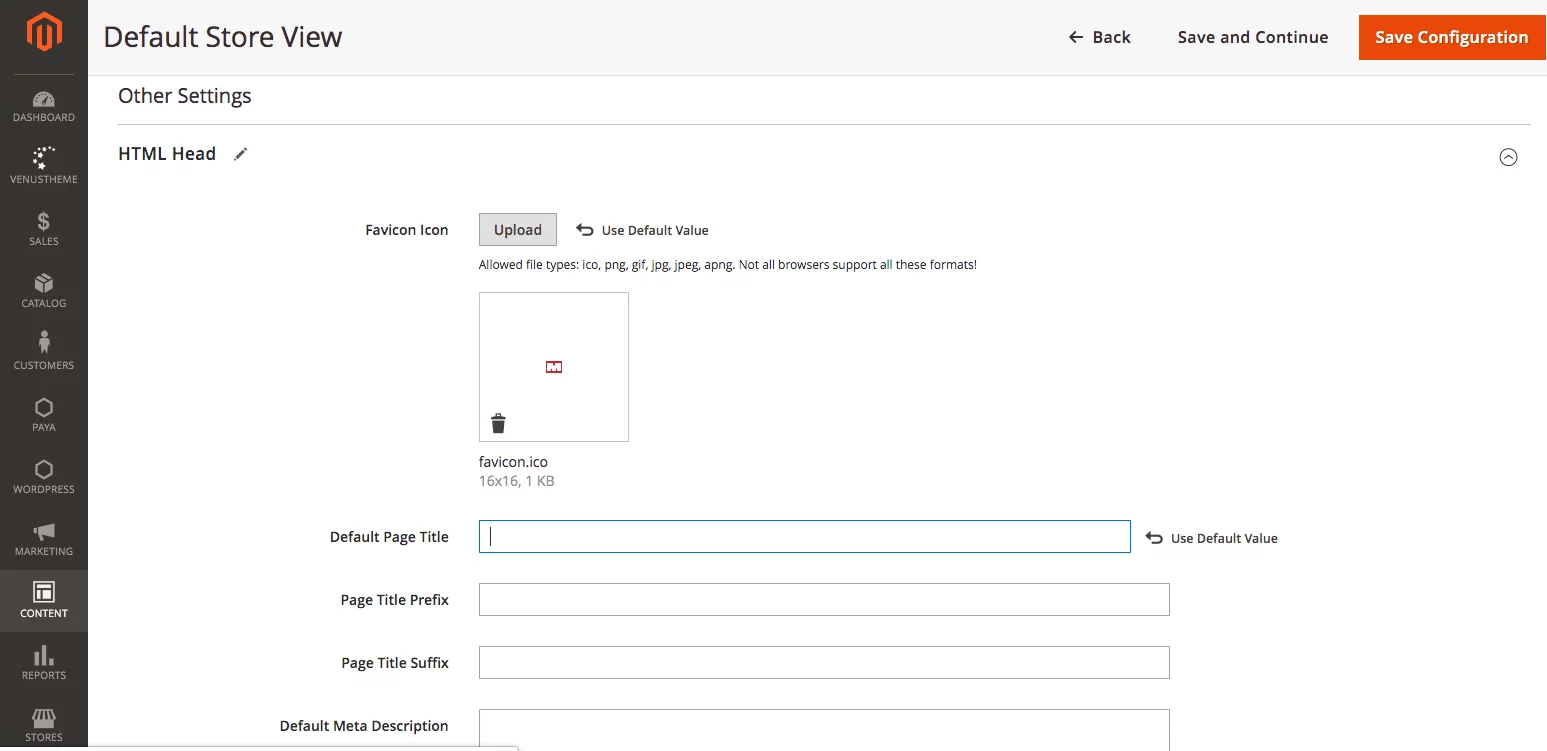
- From your Magento admin, navigate to Content > Design > Configuration.
- On the default store view, click “edit.”
- Scroll down to find the HTML Head section, where you can edit your store’s default title, description, keywords, etc.
Changing Titles and Meta Descriptions for Categories & Products
Products: In the admin, navigate to Products > Catalog > then click on “edit product” to the Search Engine Optimization section, where you can paste your title, keywords, and meta description. The “Meta Keywords” tag is mostly considered obsolete these days.
Categories: In the admin, navigate to Products > Categories, then select a category and find the SEO settings section by scrolling down, like you did above for products.
3. URL Optimization
By default, your version of Magento may automatically add store codes to your URL. You 100% do not want your eCommerce store to be configured in this way, but beware, changing URL without the direction of an SEO expert could have major negative consequences!
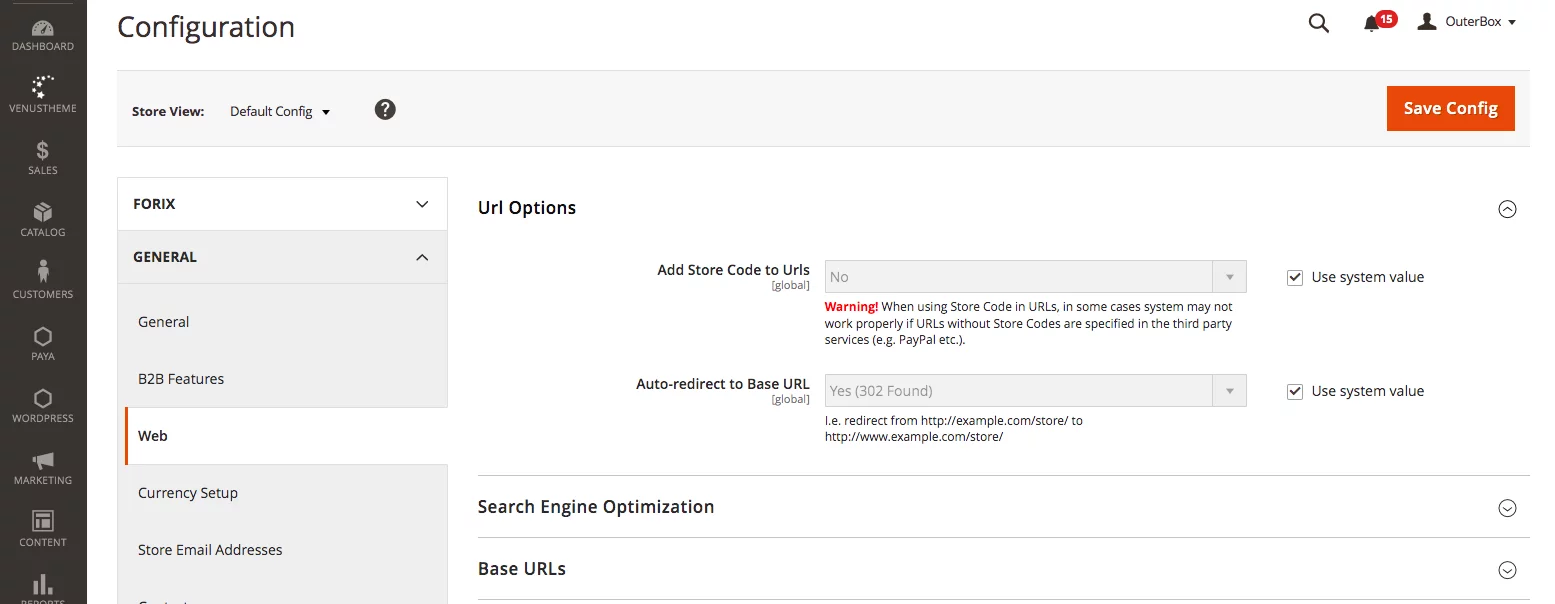
Instead, go to Store > Configuration > General > Web > URL Options. Here, you can set “Add Store Code to URL” to “No.”
Bonus Tip 3.5! You can remove “index.php” from your Magento URLs for a cleaner, more SEO friendly URL structure, by selecting “Yes” for “Server URL Rewrites.”
4. Product Image Optimization
Optimizing your eCommerce site’s product images is essential on any platform, especially Magento. Follow these best practices to ensure your images are well optimized, which should help the product page rank, but also helps these images show up in Google image searches which can be an additional source of traffic:
- Use file names that describe the image and product, instead of random numbers or letters.
- Use alt text to describe the image thoroughly, using target keywords in your description.
- You can find these settings under Catalog > Products. In “Configurable Products,” double click on the thumbnail. Then click “Go To Details Page.” From there, you can see image size, resolution, and add alt text, etc.
5. Canonical Tags and Duplicate Content
Duplicate content is an issue that plagues thousands of Magento eCommerce sites. Whether from paginated category pages or pages with very similar content, you can solve this problem using canonical tags. Canonical tags essentially tell Google the “actual” location of the true page, so if you have ten pages of duplicate content based on one crucial page, you set the canonical of those ten pages to the crucial page’s URL.
Common Causes of Duplicate Content on Magento:
- Pagination (mostly on category pages with more products than can fit on one page)
- Product filtering/sorting
- Same product accessible in multiple categories
- Variations of products with minor differences. For example, if you have the same T-shirt available in different sizes with dedicated URLs as opposed to the size being a selectable attribute on one product page.
You can adjust canonical settings in the Magento admin.
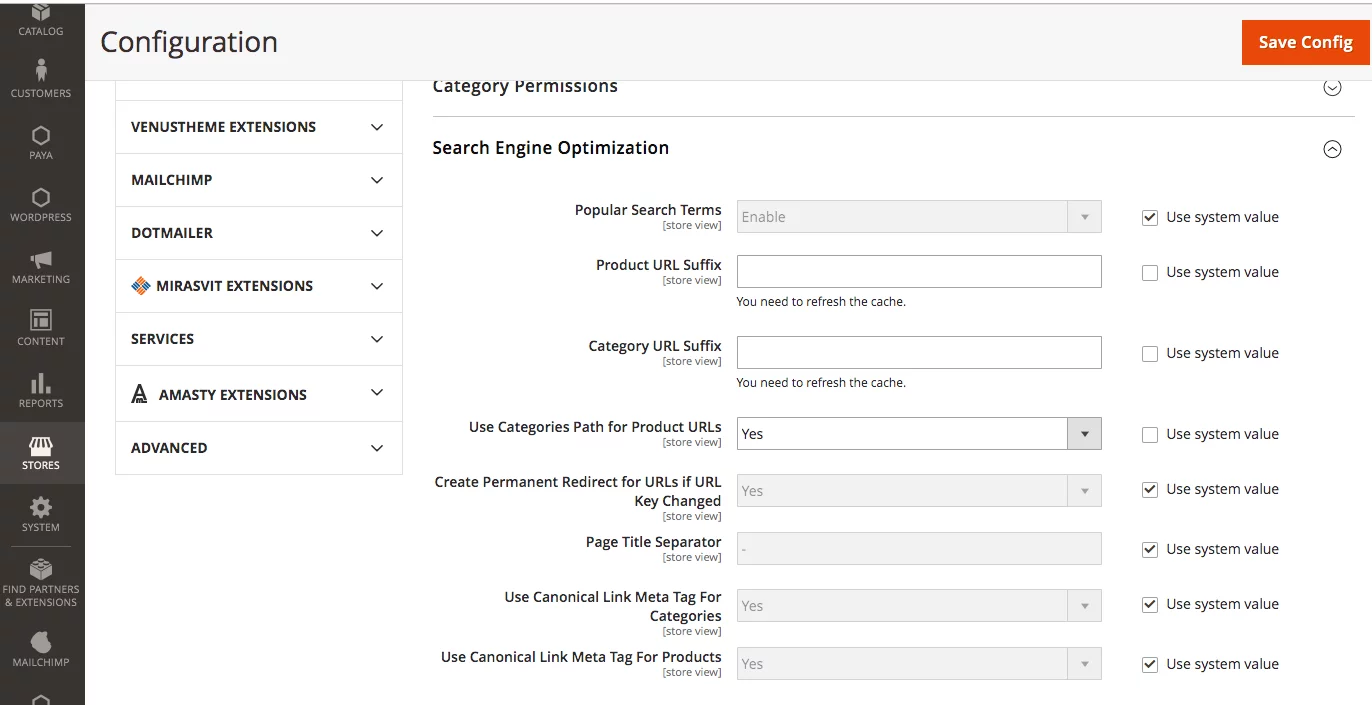
6. Sitemap Creation and Optimization
Magento 2 still doesn’t support automatically generated sitemaps. To work around this, you’ll need to install an extension or manage this manually. We recommend Dynamic HTML Sitemap for Magento 2.
With the right extension, you’ll be able to:
- Automatically generate your sitemap(s)
- Customize listing order
- Add links to external domains within your sitemap
- Configure dynamic (automatically updated) sitemap settings
7. Robots.txt
One big advantage of Magento 2 is that it is much easier to modify your Robots.txt file. Simply go to Stores > General > Design> Edit custom instruction of robots.txt file to edit your robots.txt file.
To view your robots.txt file, simply add “robots.txt” after your website’s domain name in your browser’s address bar.
The robots txt file tells search bot crawlers which folders and pages to pay attention to and which you’d prefer they ignore. Properly optimized robots.txt files help Google understand which sections of your site are important and thus worth indexing and showing in the SERPs.
8. Internal Linking
Internal links help search engine bots better understand your website and provide another opportunity for optimization. Of course, optimized anchor text on internal links is important, but should also be diverse and natural, and not spammy.
Magento has many features to help improve your internal link network, such as adding related products, up-sell products, and cross-sell products for a given product in your store. This is important to consider for usability, CRO, and on-page optimization.
9. Structured Data for Rich Snippets
Structured data is one of the most important changes in the SEO industry in recent years. By marking up specific elements as structured data using formats like Schema, you can provide Google and other search engines more specific information about what your page is about. Be sure to mark up product images, SKUs, product reviews, and more, to give search engines the best chance to truly understand your website content.
kodingweb.com Rich Snippet Example:
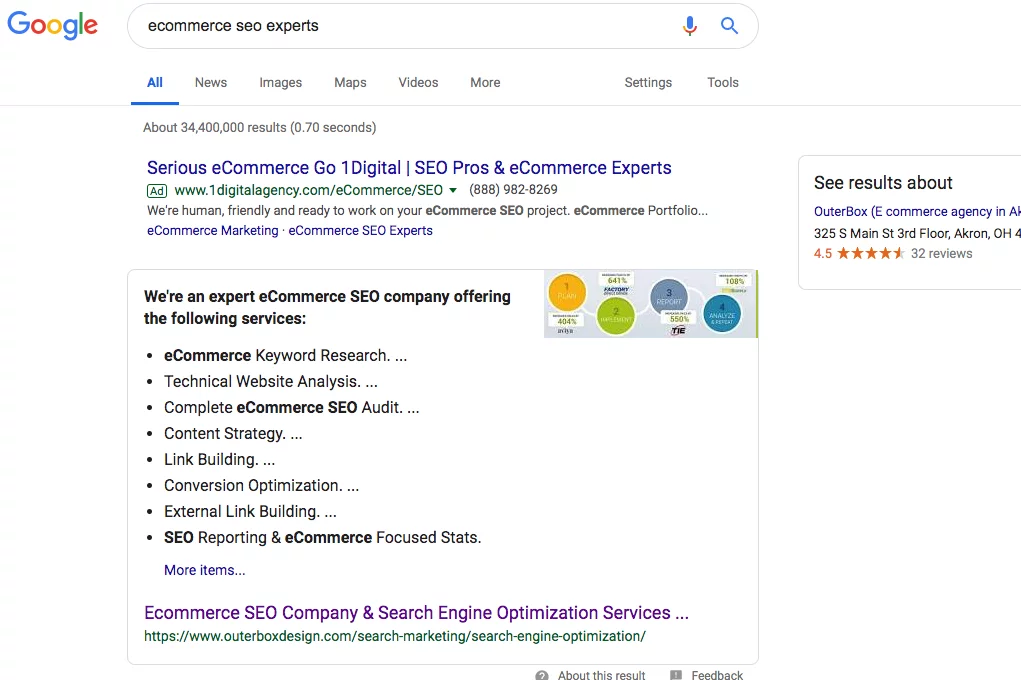
By using structured data on your site, you improve your chances to earn “rich snippet results”, like the one above.
10. Clean, Organized Source Code, Javascript and CSS
Google and other search engine bots love well organized and clean code. Of course, you’ll have limited control over much of your Magento website’s source code, but there are still ways you can improve the code and make it “leaner’.
- Minify Javascript and CSS
- Consider moving Javascript and CSS in the template files to external files, which can be cached more easily by both users and search engines.
- Have a reputable Magento developer audit your site’s code for potential SEO issues and areas of improvement.
11. Out of Stock Product Management SEO Strategy
You need to develop an SEO strategy for handling out-of-stock products. Most of the time, if you plan to bring a product back into inventory, the smart SEO decision is to leave the page up. Keep the content updated to let customers know when they can expect the product to be back in stock, and consider using a Magento extension to notify potential customers automatically.
If the product will never come back, consider 301 redirecting to a replacement product or the most relevant category.
12. Site Speed Optimization
Magento is notoriously clunky and not a super-fast platform, but there are ways to improve site speed for your Magento eCommerce store:
- Enable caching
- Consider enabling “flat categories” and “flat products”
- Merge Javascript and CSS files, consider hosting externally. Merging is accomplished in the Magento 2 admin under Stores > Configuration > Advanced > Developer.
You may need higher-permission Magento access in the admin to have the developer option. You should also not make changes to this section without your developer’s knowledge.


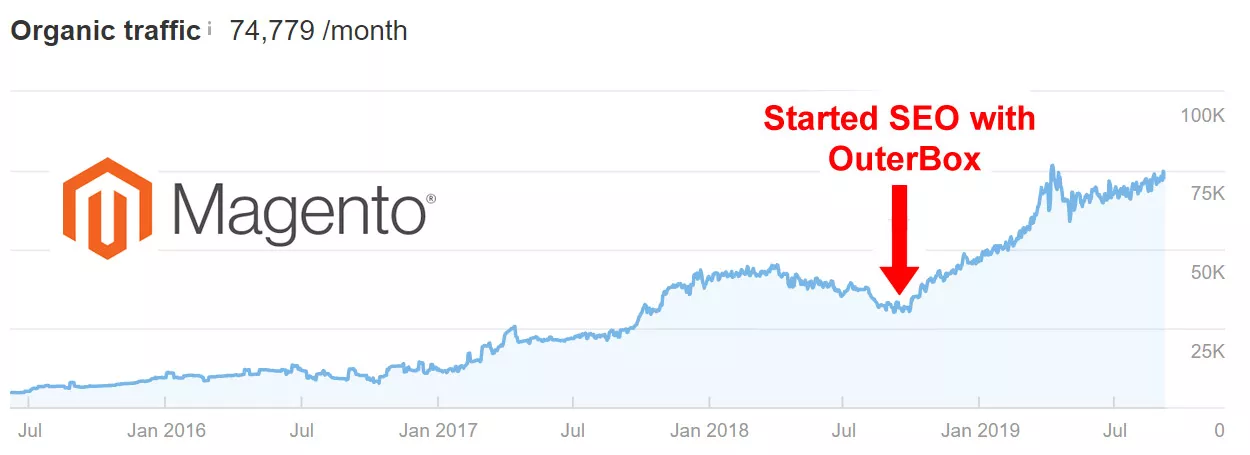






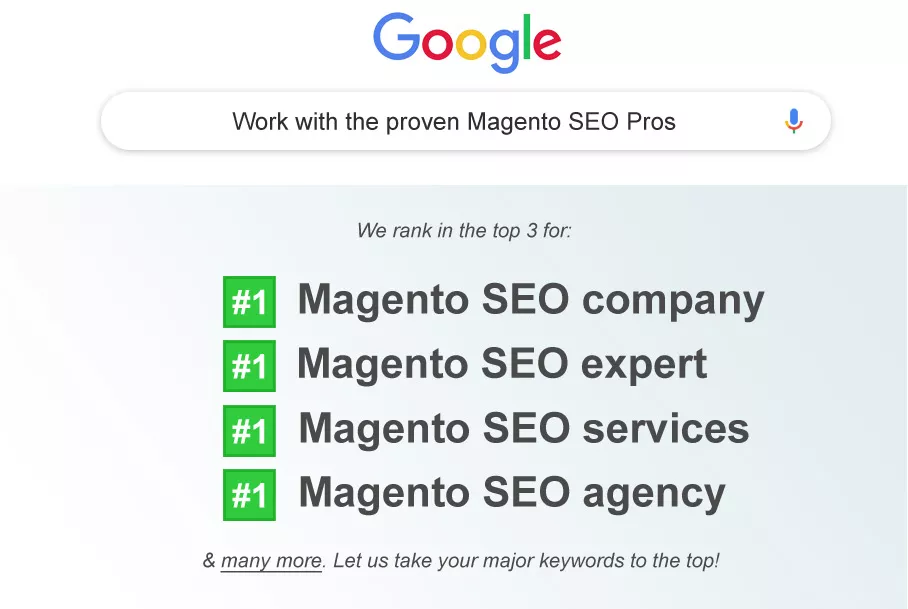



 ?
?

